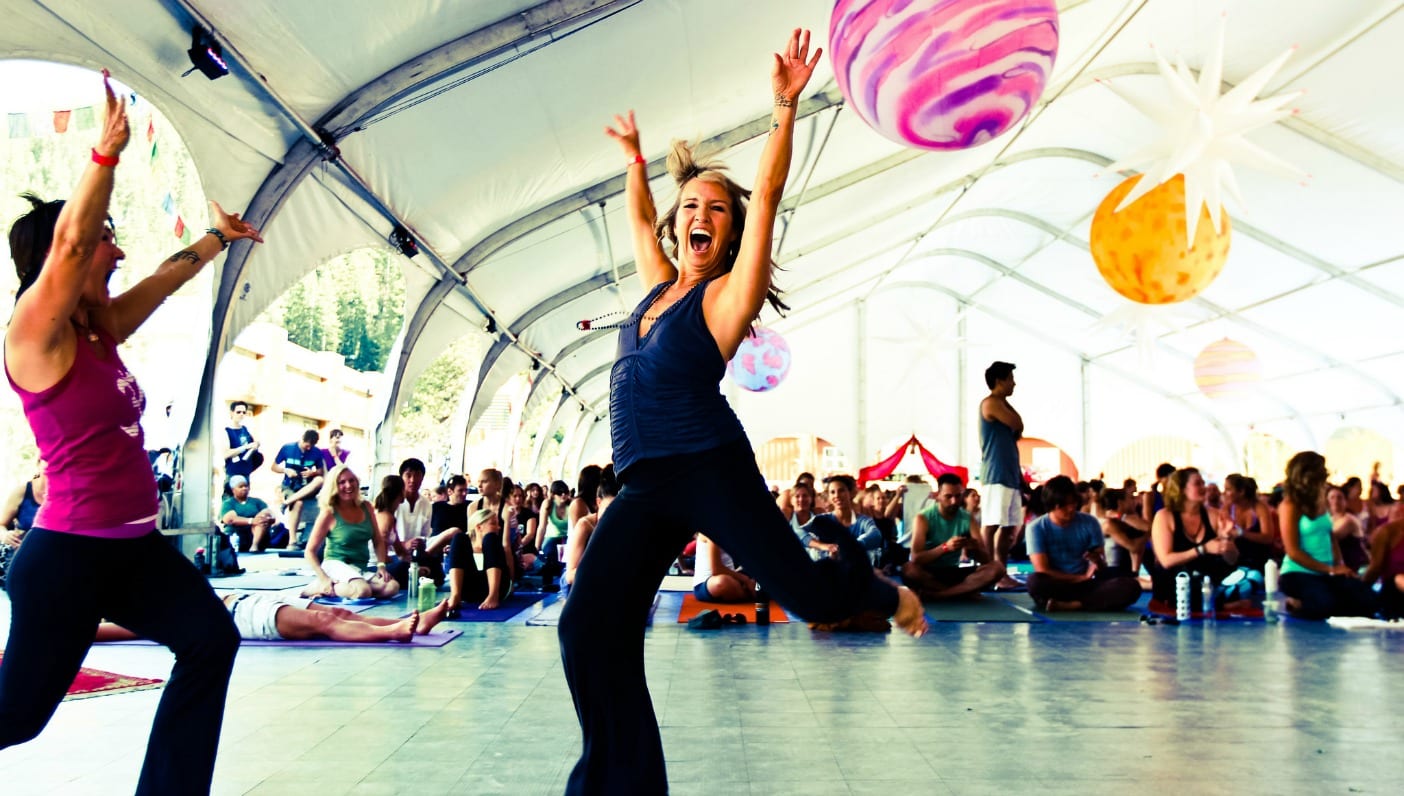
This post originally appeared on Five Tattvas.
My teacher used to always say, “Look at the person on the dance floor acting a fool—they may not be the best dancer, but they’re having the best time.” She often included a little bit of spontaneous and free-form movement in her classes—which sent many students into butt-clench mode—but her words stuck with me far beyond my mat. And to this day, whenever I find myself stiffening in the face of change (an unexpected sub, for example…) I try to wiggle my booty a bit and see what shakes down.
In spite of our best efforts, it seems we all invariably attach to our practice—especially us asana junkies. It is deeply satisfying to spend time upside down, and the moment our feet float away from the wall is undeniably sweet. But in that moment of feeling we have “nailed” our practice, we quietly tell our inner self that practice is “X.” Practice becomes the thing that occurs when my feet float, or when I make it to the studio six days a week, or whichever “X” factor it may be. Practice stops when I encounter unforeseen financial trouble or emotional upset or fatigue. Over and over again we must remind ourselves that these instances are when the practice actually begins: in the face of change. Unfortunately, we don’t get to choose what changes or when, we merely choose whether or not to accept the change and whether or not to go with the flow.
I have been injured several times in my “asana career” and have had to adapt my practice to the undeniable circumstance of not being able to put weight on my right arm, for example. At the time this particular injury happened, I had just settled into a consistent and budding Mysore practice. Now, anyone familiar with Ashtanga knows it’s all about that Surya Namaskar. I, however, had no access to urdhva hastasana, let alone any of the weight-bearing postures. I was deflated and deeply sad. In the moment, it was true that my asana practice could not develop because of the way that I had previously defined it. But because my teacher is a brilliant P.T. as well as a devoted Ashtangi, she encouraged me to show up and do whatever I could, including a makeshift assortment of standing postures from the Primary Series and savasana. To arrive at the shala each morning in spite of what I “could” do was tremendously humbling and opened a huge vault in my experience of “practice.” I noticed my breath with more sensitivity and put all my training to use smoothing out the jagged lines of, “But I can’t,” and “When will I be able to…?” In my mind, I remembered, ”Yogas citta vritti nirodah….”
Injury is an obvious place to start, but what about those less-obvious changes? Seasonal shifts, for example, and a necessarily altered energy level—or an emotional upheaval, such as a breakup, a move, or watching the news. As committed practitioners, it can be confusing at best (if not infuriating) to implement a strong routine for self-care and then be asked to loosen our grip on the reins. There’s the mental agitation, the not having what we want when we want it—and worse—the not having a way to correct the problem; isn’t that the citta we’re trying to nirodah? When we find ourselves rigidly holding on to our routines and refusing to adapt, we can always count on Patanjali to drop his wisdom bombs and remind us, “Abhyasa-vairagyabhyam ta nirodah.” The fluctuations (citta vrittis) are stilled by practice and dispassion (Sutra 1.12). We must practice, i.e. show up, and bring with us a little of this “dispassion,” or the absence of craving for the sense objects, a category to which our body and our asanas surely belong.
This is no small task, but it is the task, and while there are those who have mastered this, I find it soothing to look to nature for guidance; I don’t feel competitive with the elements. As seaweed is moved by the tide, we are moved by the actions of and our responses to the world around us. Owing to its malleability and rootedness, seaweed dances gracefully. Likewise, a practice rooted in a focused, holistic approach or broader-reaching tradition can provide said root, but it is up to us to soften and let the tides of life move. They are part of a grander plan than our own. When pincha mayurasana is off the table, or maybe putting any weight on your left side is impossible, don’t sit to the right and wait for things to go back to the way they were. Dance like a fool, and see what could be.
Originally written by Stacey Ramsower for Five Tattvas.
